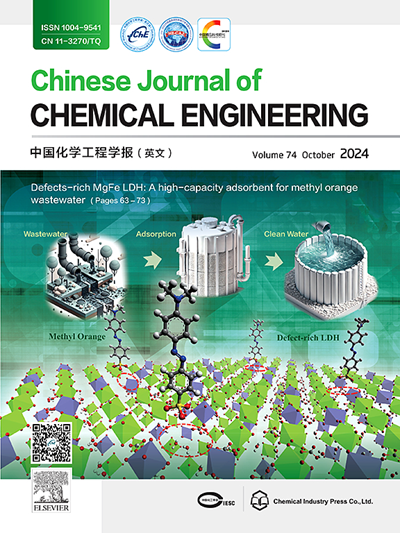Development of a capillary bundle evaporation advanced mathematical modeling for 1,2-propylene glycol–glycerin mixtures in porous media
IF 3.7
3区 工程技术
Q2 ENGINEERING, CHEMICAL
引用次数: 0
Abstract
Porous liquid-conducting micro-heat exchangers have garnered considerable attention for their role in efficient heat dissipation in small electronic devices. This demand highlights the need for advanced mathematical models to optimize the selection of mixed heat exchange media and equipment design. A capillary bundle evaporation model for porous liquid-conducting media was developed based on the conjugate mass transfer evaporation rate prediction model of a single capillary tube, supplemented by mercury injection experimental data. Theoretical and experimental comparisons were conducted using 1,2-propanediol–glycerol (PG–VG) mixtures at molar ratios of 1:9, 3:7, 5:5, and 7:3 at 120, 150, and 180 °C. The Jouyban–Acree model was implemented to enhance the evaporation rate predictions. For the 7:3 PG–VG mixture at 180 °C under the experimental conditions of the thermal medium, the model’s error reduced from 16.75% to 10.84% post-correction. Overall, the mean relative error decreased from 11.76% to 5.98% after correction.

多孔介质中1,2-丙二醇-甘油混合物毛细管束蒸发高级数学模型的建立
多孔液导微热交换器因其在小型电子器件中的高效散热作用而受到广泛关注。这一需求突出了需要先进的数学模型来优化混合换热介质的选择和设备的设计。以单根毛细管的共轭传质蒸发速率预测模型为基础,辅以压汞实验数据,建立了多孔导液介质的毛细管束蒸发模型。采用1,2-丙二醇-甘油(PG-VG)混合物,在120、150和180°C下,摩尔比分别为1:9、3:7、5:5和7:3,进行理论和实验比较。采用Jouyban-Acree模型对蒸发速率进行预测。在热介质实验条件下,对于温度为180℃的7:3 PG-VG混合物,修正后的模型误差由16.75%减小到10.84%。总体而言,校正后的平均相对误差从11.76%下降到5.98%。
本文章由计算机程序翻译,如有差异,请以英文原文为准。
求助全文
约1分钟内获得全文
求助全文
来源期刊

Chinese Journal of Chemical Engineering
工程技术-工程:化工
CiteScore
6.60
自引率
5.30%
发文量
4309
审稿时长
31 days
期刊介绍:
The Chinese Journal of Chemical Engineering (Monthly, started in 1982) is the official journal of the Chemical Industry and Engineering Society of China and published by the Chemical Industry Press Co. Ltd. The aim of the journal is to develop the international exchange of scientific and technical information in the field of chemical engineering. It publishes original research papers that cover the major advancements and achievements in chemical engineering in China as well as some articles from overseas contributors.
The topics of journal include chemical engineering, chemical technology, biochemical engineering, energy and environmental engineering and other relevant fields. Papers are published on the basis of their relevance to theoretical research, practical application or potential uses in the industry as Research Papers, Communications, Reviews and Perspectives. Prominent domestic and overseas chemical experts and scholars have been invited to form an International Advisory Board and the Editorial Committee. It enjoys recognition among Chinese academia and industry as a reliable source of information of what is going on in chemical engineering research, both domestic and abroad.
 求助内容:
求助内容: 应助结果提醒方式:
应助结果提醒方式:


